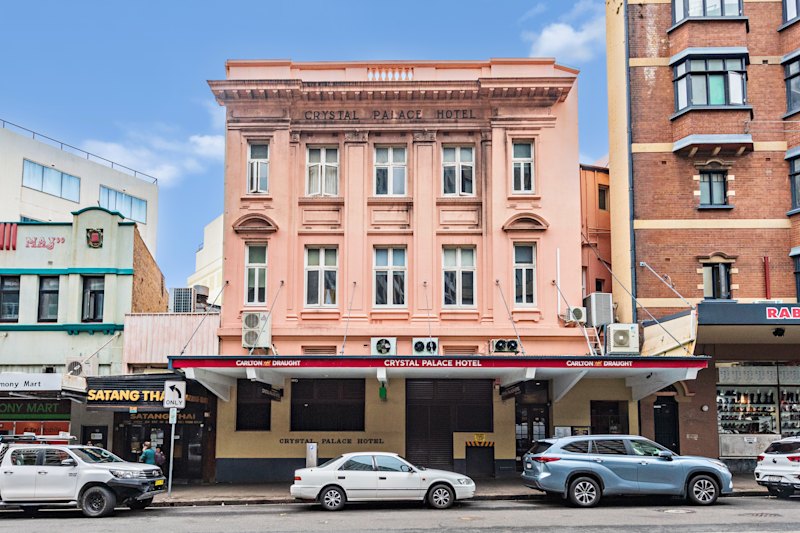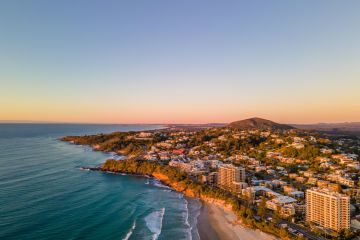Murnell, the historic East Melbourne house that shouldn't really be there
Rare in so many respects is Murnell, a perfect-to-its-period private house with chapters of story embedded in both its brick walls and site at the hyper-exclusive top end of George Street, East Melbourne.
To be auctioned on Saturday by Caine Real Estate, the four-bedroom 1909 home is quite exceptional, especially in Victoriana-rich East Melbourne, because its style is Art Nouveau. Carved into the wooden fretwork of the lofty rooms with their pressed-metal ceilings and stained glass windows are silhouetted images of kookaburras and waratahs.
It’s rare, too, because since it was commissioned and built by Miss Elizabeth Clarke — a member of the richest family of turn-of-the-20th-century Victoria, and, incidentally, the dynasty who raised of some of the biggest private houses in Australia (think Rupertswood, Cliveden and Queen Bess Row) — Murnell has only had five owners.
The most recent (who prefers to remain nameless) says through their collective 108 year occupancy “they all had such a light touch on the property”.
Over the 20 years that the relinquishing owners have been custodians of “an elegant, spacious, light-filled house, we’ve hardly touched it apart from remodelling the conservatory and refreshing the paint”.
“Most of our work has been in preserving what’s there,” she says.
Murnell is also rare because, according to the original 1860s subdivision of the block bordered by George, Clarendon and Hotham streets, it shouldn’t even be there.
- Related: Streets where almost nothing is for sale
- Related: New houses, old grid: Rebuilding post-disaster
- Related: Melbourne’s most astonishing church conversion?
The hilltop site, already sacred as a corroboree ground before being designated for the proposed Anglican Cathedral of Melbourne, was taken up instead by the smaller Holy Trinity Church when St Paul’s Cathedral was slated to be erected on the corner of Flinders and Swanston Streets in the city.
When Holy Trinity burned down in 1905, leaving only four standing walls and the brick schoolhouse behind, the congregation opted to replace the church but to locate it closer to the corner of Hotham and Clarendon. That left the George Street frontages available for subdivision.
Miss Clarke — presumably using substantial monies promised or left to her by the wealthy and widowed chatelaine of Cliveden, Lady Janet Clarke — pounced on a two plots, buying both 190 and 190A George Street. She had architect, C.A. Cooper design her a finely crafted home, replete with the most modern and fashionable fittings and fixtures.
She then promptly died and her new house “in the prominent and desirable location” was auctioned “at half past 2 o’clock” in July 1910. It realised £1395 and a 25 per cent on-the-spot deposit was required.
The equally well-heeled Misses Roche bought the house and held it until 1953 when it was purchased by the Tramways branch of the Returned Soldiers Sailors and Airmens Imperial League (forerunner of the RSL), who locked up the top storey and used only the front two downstairs rooms as a library and meeting place.
With another new owner in 1991, the side garden was subdivided off before a further sale to a local lady who put a conservatory on to capture north light and replace the lost outdoor amenity.
In 1997 and in a fortuitous “one last bid” at an auction attended by 200 other people, the present owners purchased Murnell. They’d been stalking the suburb for a decade, looking for a place to live and from where he could walk across the park to his city office. In Murnell they found more than they were looking for.
Having since relocated to Sydney, the couple are reluctantly letting go of their beloved, storied home that she says “is indeed such a rare survivor”.
Agent Paul Caine, advertising the property as “combining period class and charmed modern style”, is anticipating something between $3 million and $4 million when Murnell goes under the hammer at 11.30am on Saturday.
We recommend
States
Capital Cities
Capital Cities - Rentals
Popular Areas
Allhomes
More







